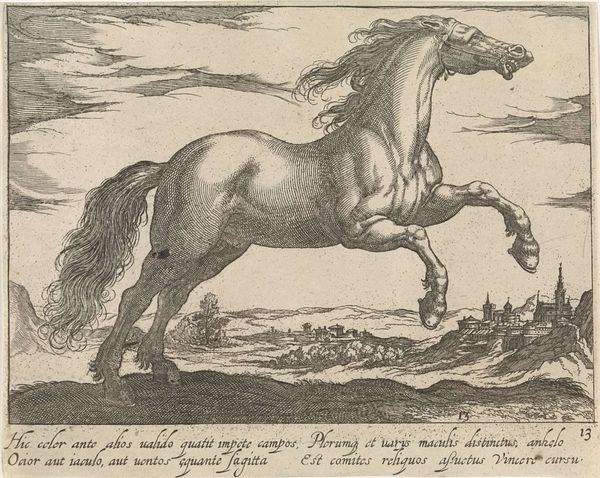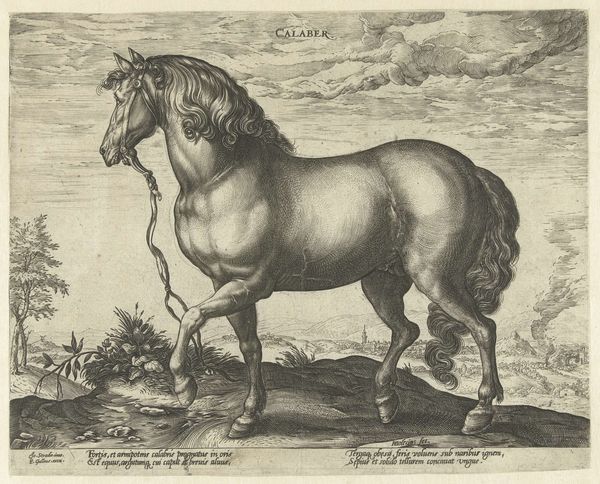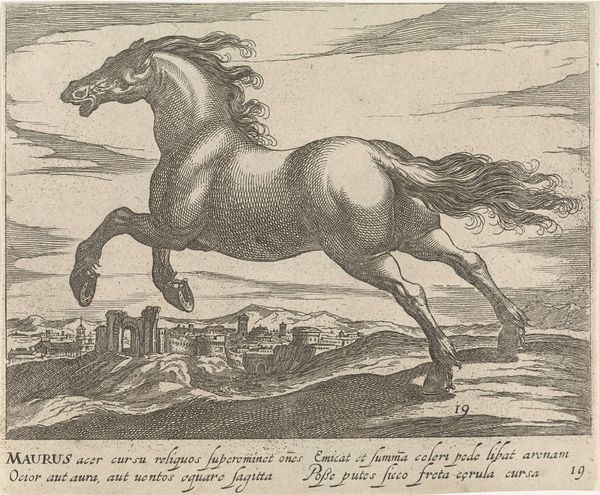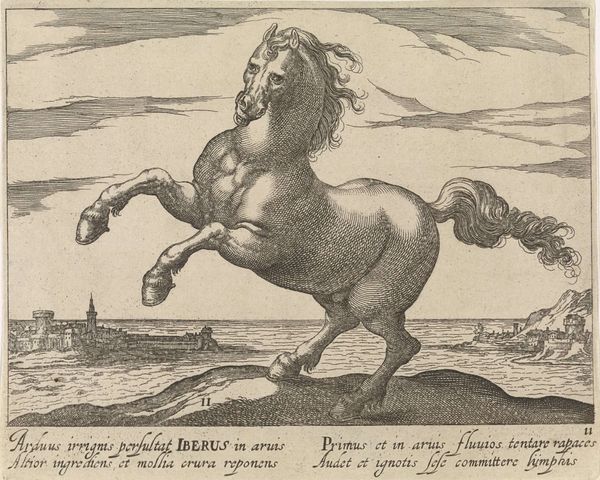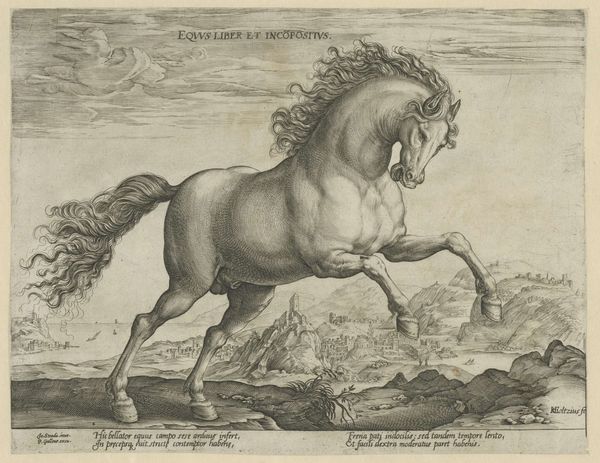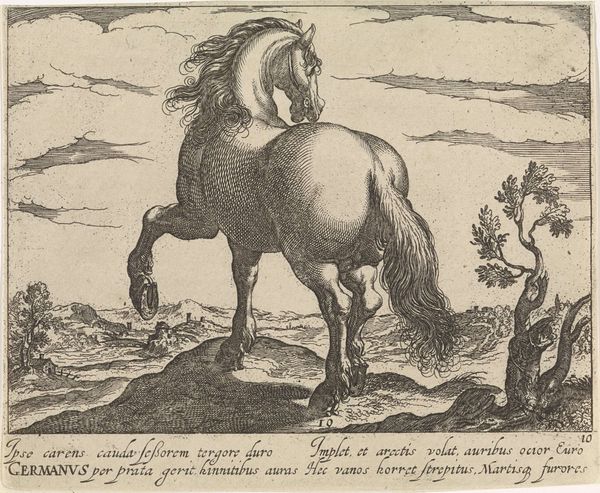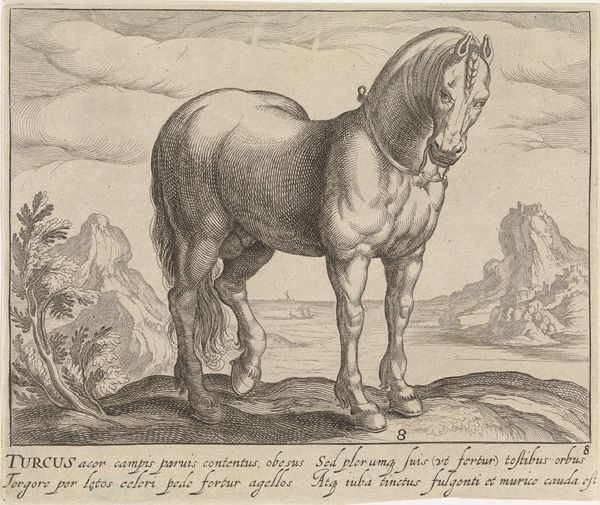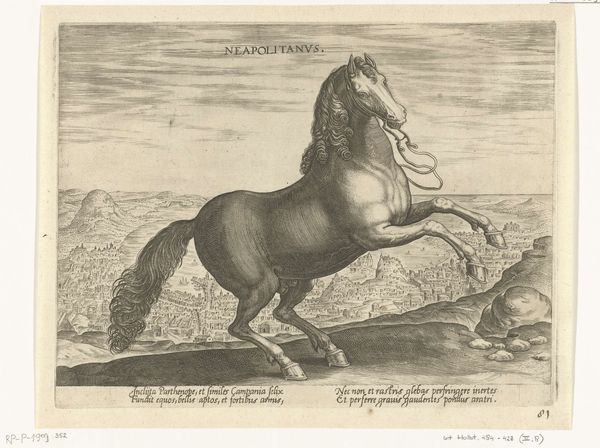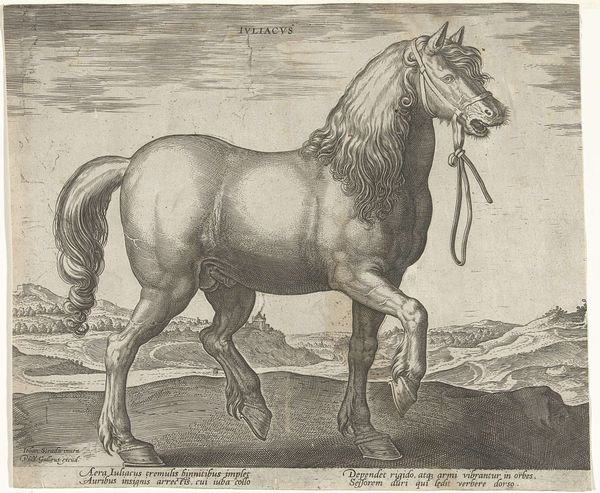
print, etching, engraving
#
baroque
#
animal
# print
#
etching
#
old engraving style
#
landscape
#
figuration
#
classicism
#
horse
#
pen work
#
engraving
Dimensions: height 136 mm, width 165 mm
Copyright: Rijks Museum: Open Domain
Editor: Here we have "Landschap met paard uit Polen," or "Landscape with Horse from Poland," an etching and engraving by Egbert van Panderen, dating from around 1590 to 1637. The horse is so powerful and commanding; it really dominates the scene. What strikes you most about this piece? Curator: The image immediately situates itself within discourses of power, doesn’t it? The horse, often a symbol of nobility and strength, is presented here against a backdrop that suggests both a specific locale—Poland—and a broader symbolic landscape. Consider the era this print was made; Poland held significant geopolitical sway. Does the print perhaps participate in constructing ideas about Polish identity and power for a European audience? Editor: That's interesting; I hadn't thought about it in terms of national identity. It seemed like just a noble horse in a field. Curator: Look at the Latin text at the bottom. “Polonia oriundus campis excurrit” – Poland, sprung from the fields, rushes forth. It connects the animal to the land, conflating their power. Is it simply a celebration, or could it be subtly othering, reducing a complex nation to idealized nature and animalistic strength? The way the horse is rendered, almost bulging with muscle, toes into gendered visual stereotypes prevalent at the time too, associating nations with gender. What do you think? Editor: I see what you mean. It's not just a horse; it’s a statement. So the artist uses the animal to represent broader political ideas about Poland at the time, even using stereotypical gender images? I'll definitely look at landscapes differently now. Curator: Exactly. It’s a reminder that even seemingly simple images are deeply embedded within their social and political contexts. Analyzing through this intersectional lens can open new interpretive possibilities and reveal power structures at play.
Comments
No comments
Be the first to comment and join the conversation on the ultimate creative platform.
